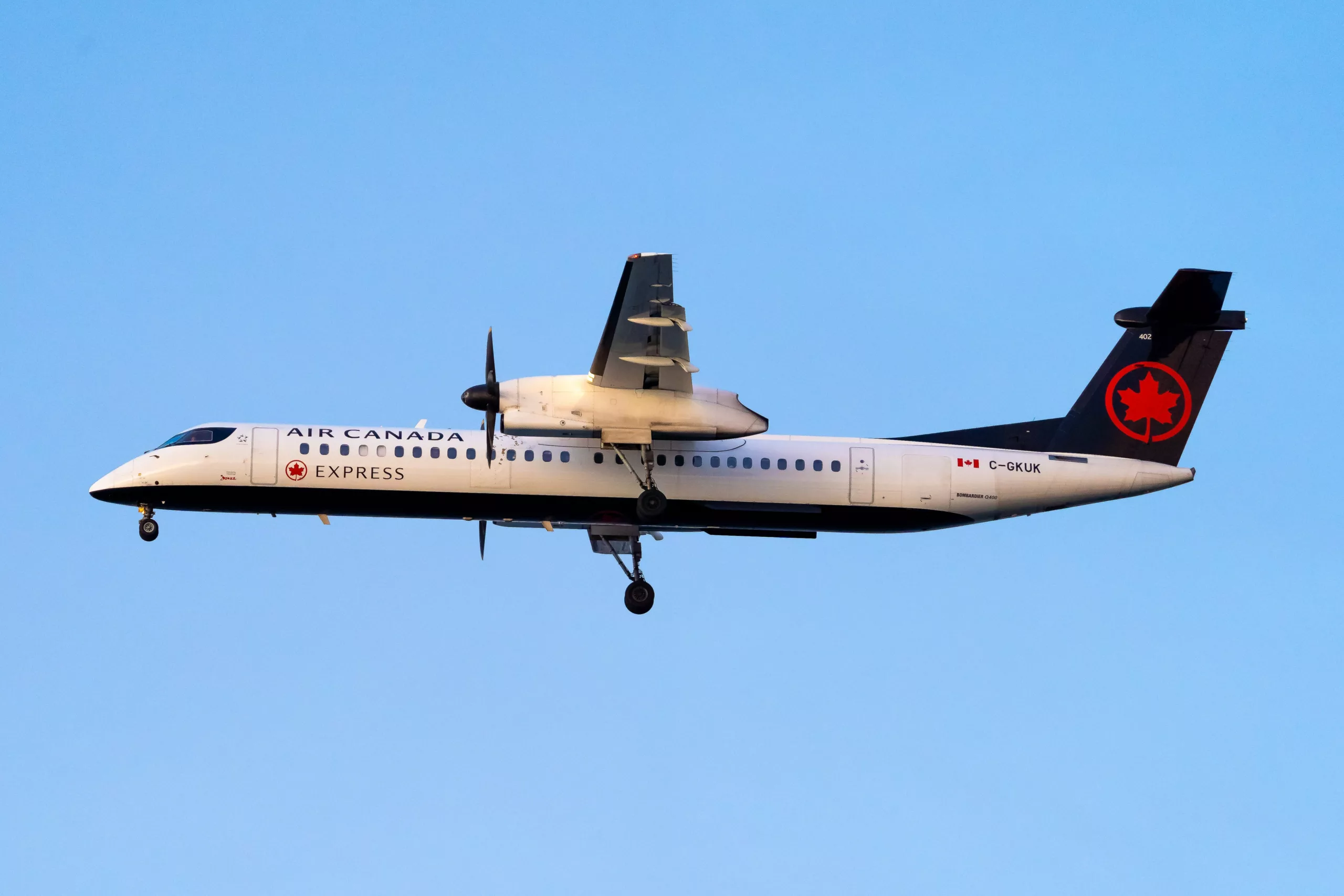Air Canada Expands U.S. Flights from Downtown Toronto Airport
Air Canada is set to significantly enhance its operations at Billy Bishop Toronto City Airport (YTZ), launching four new nonstop routes to the United States starting March 29, 2026. This strategic expansion aims to double the airline’s capacity at the conveniently located downtown airport, providing travelers with more options for U.S. destinations.
The inaugural route will connect YTZ to New York’s LaGuardia Airport (LGA) aboard a De Havilland Canada Dash 8-400. This new service is made possible by the upcoming opening of a U.S. Customs and Border Protection preclearance facility at YTZ, allowing passengers to clear immigration and customs in Canada before their flights. Following this launch, Air Canada will introduce additional routes to Boston Logan International Airport (BOS), Chicago O’Hare International Airport (ORD), and Dulles International Airport (IAD) near Washington, D.C., in June and July.
In addition, Air Canada plans to increase its domestic offerings from YTZ with flights to Montreal-Trudeau International Airport (YUL) and Ottawa International Airport (YOW) scheduled for January 2026. Mark Galardo, Air Canada’s Chief Commercial Officer, expressed enthusiasm for the expansion, stating, “We’ve got a big, bold expansion at YTZ. We’re literally doubling our capacity inside that airport.”
Current data from aviation analytics firm Cirium indicates that Air Canada operates 12 daily departures from YTZ, which will increase to 25 daily departures following the expansion. Porter Airlines, the largest carrier at YTZ, currently averages 41 daily departures from the airport.
YTZ is uniquely situated on an island just minutes from downtown Toronto, accessible via an underground pedestrian tunnel or a quick ferry ride. This prime location makes it an attractive option for travelers looking for convenience when flying to the U.S.
The new nonstop flights come at a time when Canadian travel to the U.S. has seen some fluctuations. According to the U.S. International Trade Administration, the number of Canadians entering the U.S. by air dropped nearly 12% during the first seven months of the year compared to the same period in 2024. Despite this slowdown in leisure travel, Galardo noted that business travel between Canada and the U.S. remains strong, and there has been no decline in American visitors to Canada.
Air Canada is confident that its new routes will attract a loyal customer base in Toronto. The airline is also working to add 10 to 15 new U.S. airports to its network, enhancing its “sixth-freedom” travel capabilities. This term refers to passengers who travel from one country, connect in a second, and arrive in a third. For Air Canada, this could mean connecting flights through its hubs at YUL, Toronto Pearson Airport (YYZ), and Vancouver International Airport (YVR).
Recently, Air Canada announced the return of service to San Antonio International Airport (SAT) and new routes to Cleveland Hopkins International Airport (CLE) and John Glenn Columbus International Airport (CMH) in Ohio. Galardo hinted that further growth at YTZ could be on the horizon, including potential flights to Ronald Reagan Washington National Airport (DCA) and Philadelphia International Airport (PHL), depending on the success of the current expansion.
The choice of IAD over DCA for one of the new routes is strategic, as it connects to United Airlines’ large hub there, facilitating better connectivity for travelers. The preclearance facility at YTZ is expected to open by the end of the first quarter of 2026 or early in the second quarter, further enhancing the travel experience.
Air Canada’s new flights will directly compete with Porter Airlines, which currently serves the New York area via Newark Liberty International Airport (EWR) and offers a range of services from YTZ. Notably, Air Canada plans to match Porter’s complimentary onboard offerings, including snacks and drinks, while also providing free inflight Wi-Fi—a feature currently unavailable on Porter flights.
Porter Airlines remains focused on its growth strategy, with plans to expand its network across North America. A spokesperson for Porter emphasized the importance of healthy competition in the market, stating, “Porter’s ongoing growth and distinct service standards are clearly disrupting the competition to the great benefit of travelers.”
As Air Canada gears up for its expansion at YTZ, travelers can look forward to more options and improved services for flying to the U.S. With the addition of new routes and the opening of the preclearance facility, the downtown airport is poised to become an even more attractive departure point for both leisure and business travelers.
In summary, Air Canada’s upcoming expansion at Billy Bishop Toronto City Airport marks a significant development in U.S.-Canada air travel. With new nonstop routes to key destinations and enhanced services, travelers can expect a more convenient and efficient flying experience from downtown Toronto.







